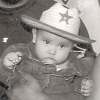No accountability for killings
Authorities silent on deaths of some kids, including little Kierra
Advertisement
Read this article for free:
or
Already have an account? Log in here »
To continue reading, please subscribe:
Monthly Digital Subscription
$19 $0 for the first 4 weeks*
- Enjoy unlimited reading on winnipegfreepress.com
- Read the E-Edition, our digital replica newspaper
- Access News Break, our award-winning app
- Play interactive puzzles
*No charge for 4 weeks then billed as $19 every four weeks (new subscribers and qualified returning subscribers only). Cancel anytime.
Read unlimited articles for free today:
or
Already have an account? Log in here »
Hey there, time traveller!
This article was published 15/12/2015 (3256 days ago), so information in it may no longer be current.
In the summer of 2008, when the province’s child-welfare system was making headlines nearly every day, an extraordinary thing happened in the back boardroom of a Portage Avenue office building.
It was the day the Southern Authority released its review into the death of Gage Guimond. Along with Phoenix Sinclair, Gage became emblematic of a system in such turmoil it could not protect toddlers from harm at the hands of those meant to love them.
The review was fast, coming a year after Gage died. It was heavily censored to protect privacy rights, but damning even so. It laid out all the ways Sagkeeng Child and Family Services fell short, how the agency was rife with nepotism and incompetence and failed to perform basic safety and criminal checks on the homes Gage was left in, including the one where he was killed. But also memorable was that Sagkeeng’s chief and the agency’s appointed board members were on hand to answer for what went wrong. In that ugly back boardroom at the Southern Authority’s cramped office, with the review in hand, reporters one-by-one sat with then-chief Donovan Fontaine and a collection of glum board members and grilled them about the review’s findings. Presiding over this at the head of the table was Elsie Flette, then the Southern Authority’s tough-as-nails CEO and the architect of a system of accountability that’s shrivelled since she left in the fall of 2013.

It was a reckoning, one of the only times I can recall First Nations leadership, instead of the white Family Services minister, answering for the failures of an agency First Nations theoretically controlled.
Compare that with the pall of silence and sluggishness that has greeted the death of Kierra Williams, the latest in a long list of toddlers to die violent deaths while under the watch of child welfare.
Haven’t heard of Kierra? You’re not alone. Most Manitobans won’t even recognize her name.
In Manitoba, the name “Phoenix” doesn’t conjure up images of a bird rising from the ashes; instead, the name reminds many of the chipmunk cheeks and pink frilly top of the little girl who came to symbolize our collective failure to care for kids. Same with Gage, who was killed a couple of years after Phoenix’s body was found.
But Kierra Elektra Star Williams has barely registered, even though the prolonged abuse she allegedly suffered rivals that of Phoenix. Calls about her to band leaders in Peguis, social-work sources and provincial staff often required a reminder — “You know, the toddler killed in Peguis last summer. The kid whose parents and stepsister are charged in her death?”
The Free Press had to beg the court to release Kierra’s name, but a publication ban prohibits the reporting of any preliminary details of her death. Even now, many senior child-welfare officials are careful not to use her name in conversation for fear they will somehow be “confirming” what paltry information we’ve been able to glean. They won’t even reveal what agency was involved. It was Intertribal Child and Family Services, for the record.
In fact, the system is designed to forget Kierra. Privacy legislation is so rigid and so conservatively interpreted it allows the government and First Nations agency boards to hide. It ensures that never again will another child become the symbol of systemic failure, like Phoenix was.
When Kierra died, she was known to child welfare, but wasn’t in care. She was living with her parents, but it’s not clear whether a child-protection file was still open or whether she was in regular contact with a social worker, or ought to have been.
In the weeks after her death, Intertribal did a review of her case to see if anything went wrong. The review is secret, but senior staff at the Southern Authority said the review found the agency generally did the right thing in Kierra’s case. The review recommended better training and better assessment, which reviews always do, but highlighted no systemic failures of the kind that lead to Gage’s death.
Had the authority been concerned about deep-rooted problems at Intertribal, it could order a Section 4 review, the kind Flette ordered done on Sagkeeng CFS when Gage died. Section 4s, as we saw in Flette’s time, can be released, at least in part, giving us a glimpse into the inner workings of an agency.
Instead, this time, we have to take the system’s word for it — that it didn’t drop the ball, that other kids are safe, that this was the kind of crime no amount of protocols and checklists and risk assessments and best practices could have stopped.
Some secrecy is understandable. There are legitimate privacy issues, including the need not to stigmatize other kids in care, reveal the names of tipsters or unfairly tarnish workers who live in fear of finding themselves on the front page in another Phoenix-like case. Child-welfare workers have the hardest and most important job in the province, and they’ve been demonized in recent years, but a little honesty and openness is the only way the public will regain any faith in the system or learn the nitty-gritty about how occasionally impossible it is to keep every child safe.
Meanwhile, First Nations chiefs are entirely silent about Kierra’s death. Indigenous leaders, who have been clamouring for more control over child welfare, a system many see — quite rightly — as profoundly colonial, have said nothing about Kierra or the homicides of 11 children like her with open CFS files in the last five years. For missing and murdered indigenous women, there are — quite rightly — vigils, demonstrations and unrelenting calls for a national inquiry.
But there has been little outcry from First Nations about Kierra’s death, or the death of many children whose names we don’t even know. There are no news conferences or protests or demands for reform. The board of Intertribal — or the chiefs who appoint them — has offered no explanation or assurances or accountability. There’s been no public reckoning at a boardroom table under the watchful eye of a confident and competent bureaucrat like Flette. For Kierra, there may never be.
maryagnes.welch@freepress.mb.ca






